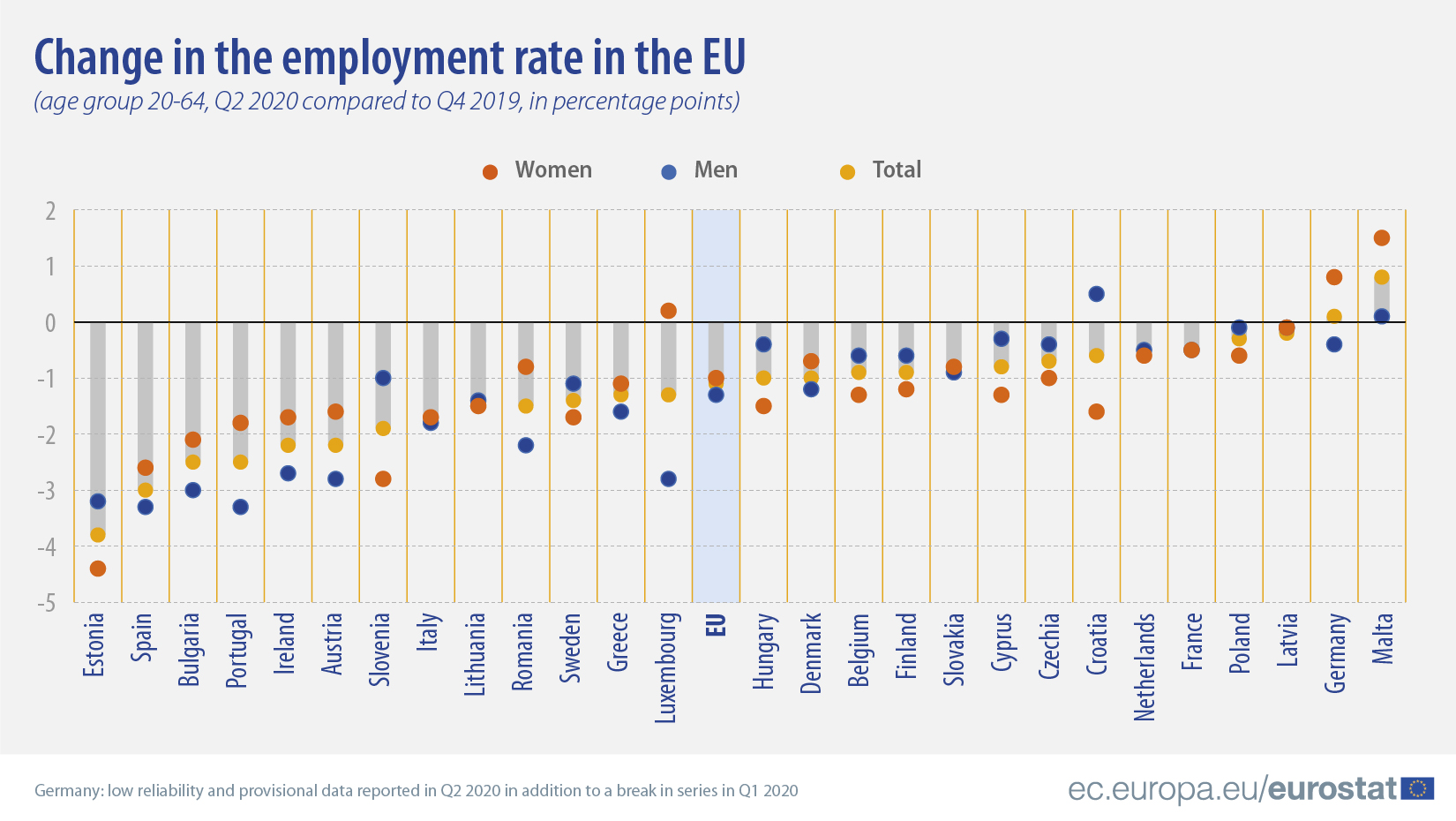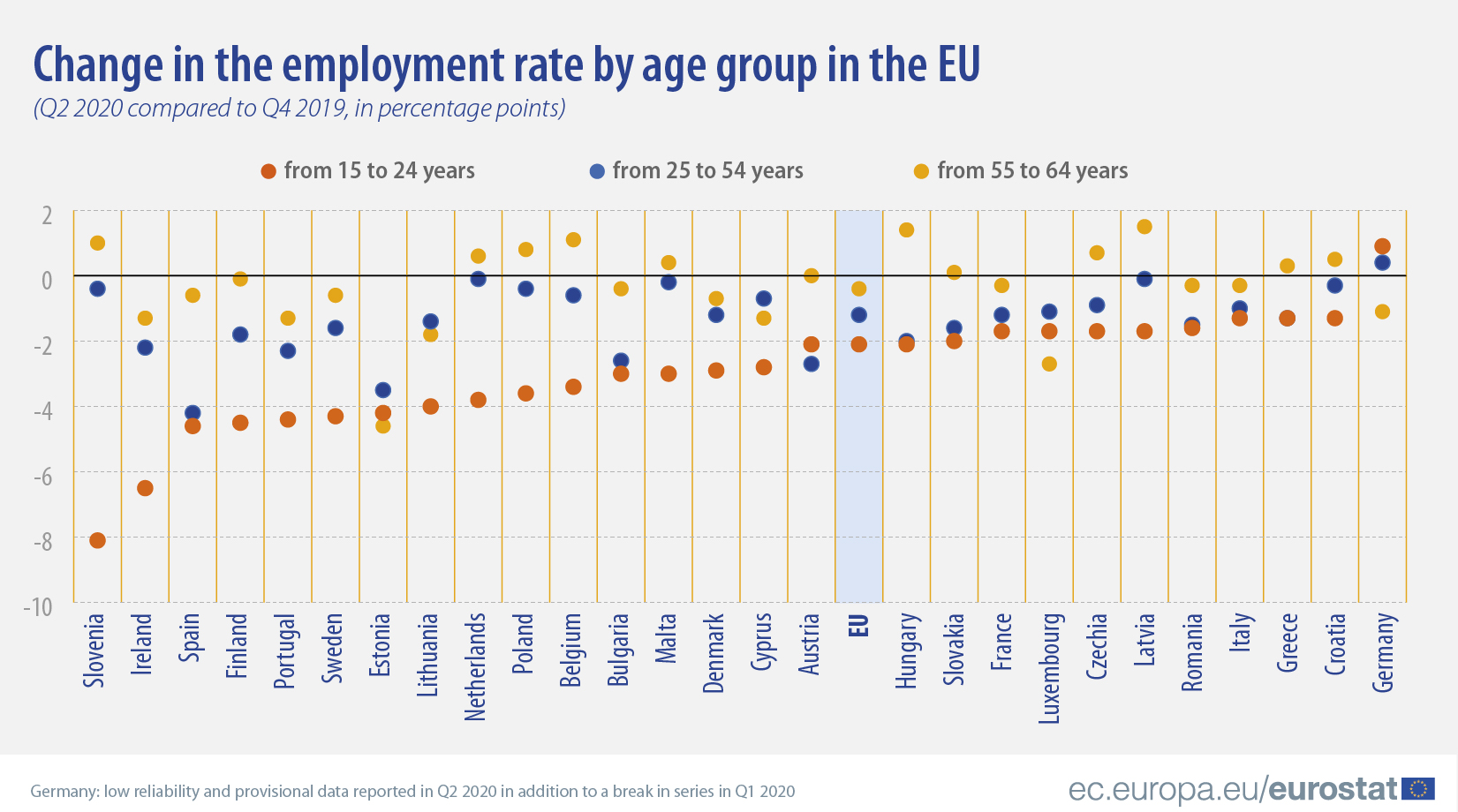Since the first quarter of 2020, the European labour market has had to cope with the COVID-19 pandemic. Many European Union (EU) Member States implemented measures such as short-time work or financial support to enterprises to dampen the impact of the health crisis on employment. This might have helped to limit mass dismissals to a certain extent. However, people who should have entered the workforce or been maintained in employment through the renewal of their temporary contract might have been directly impacted by the downturn in economic activities and the shutdown of businesses or public entities.
In the second quarter of 2020, 187.3 million people or 72.0% of the total EU population aged 20-64 were employed compared with 190.1 million or 73.0% in the first quarter of 2020 and 191.1 million or 73.1% in the fourth quarter of 2019. EU male employment decreased by 2.1 million from the fourth quarter of 2019 to the second quarter of 2020, a drop of 1.3 percentage points (pp) in the employment rate (from 79.0% to 77.7%), while female employment went down by 1.7 million, a cut of 1.0 pp in the employment rate (from 67.3% to 66.3%) over this period.
Highest falls in employment rate in Estonia, Spain, Bulgaria, Portugal, Ireland and Austria
All EU Member States, apart from Germany (see notes) and Malta, recorded a decrease in their employment rates between the fourth quarter of 2019 and the second quarter of 2020, with falls of more than 2 pp being recorded in Estonia, Spain, Bulgaria, Portugal, Ireland and Austria.
Source dataset: lfsi_emp_q
Young people most heavily affected in Slovenia and Ireland
Looking at the different age groups, in the second quarter of 2020 compared with the fourth quarter of 2019, the employment rate in the EU decreased by 2.1 pp for young people aged 15-24 (from 33.3% to 31.2%), by 1.2 pp for people aged 25-54 (from 80.6% to 79.4%) and by 0.4 pp for people aged 55-64 (from 59.6% to 59.2%). The number of young employed people aged 15-24 decreased to 14.4 million, to 140.6 million for people aged 25-64 and to 35.4 million for those aged 55-64.
The employment rate of young people decreased in all EU Member States apart from Germany (see notes). The sharpest decreases were reported by Slovenia, Ireland, Spain, Finland, Portugal, Sweden and Estonia (more than -4 pp for all seven), while the lowest decreases were registered in Croatia, Greece and Italy (-1.3 pp for all three).
Source dataset: lfsi_emp_q
Notes:
- Figures are based on seasonally adjusted quarterly results from the European Labour Force Survey (EU-LFS).
- Germany: due to technical issues with the introduction of the new German system of integrated household surveys, including the Labour Force Survey (LFS), the figures for Germany for the first and second quarters 2020 are not direct estimates from LFS microdata, but based on a larger sample including additional data from other integrated household surveys. The figures for Germany are included in the EU aggregates. For more information, see here.
- For more information also see Eurostat “Statistics Explained” articles on quarterly data on employment: Employment and Employment in detail.
- The European Union (EU) includes 27 EU Member States. The United Kingdom left the European Union on 31 January 2020. Further information is published here.
To contact us, please visit our User Support page.
For press queries, please contact our Media Support.



